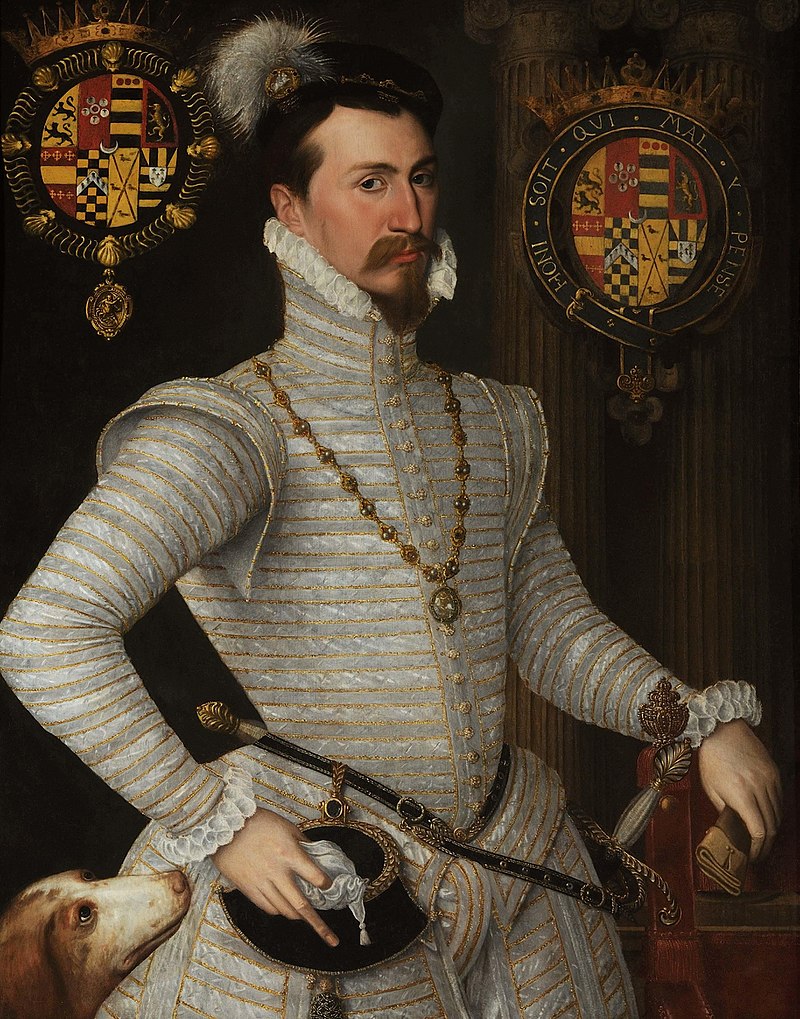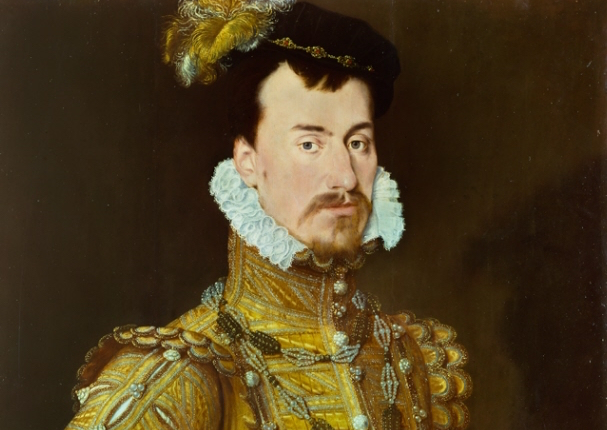Robert Dudley, Earl of Leicester, passed away on the 4th of September 1588 at Cornbury Park in Oxfordshire while on his way to Buxton. Mere weeks ago, Leicester had ridden with Queen Elizabeth I of England, the legendary Gloriana, through the streets of London in the rays of glory after the defeat of the Spanish Armada more by the severe storms than by the English armies. His health had not been good for some time: according to various versions, the earl had suffered from malaria or stomach cancer. He had gone to Buxton to take the waters there.

The story of Queen Elizabeth and Robert Dudley is one of the most touching and romantic in the world of aristocracy. He had always been the queen’s favorite, save some time after the mysterious death of his first wife, Amy Robsart, and after his remarriage to the queen’s cousin –Lady Lettice Knollys, much to Elizabeth’s rage. Although Lettice had been banished permanently from court, she had been present at Leicester’s deathbed and later attended her husband’s funeral at the Beauchamp Chapel of the Collegiate Church of St Mary, Warwick, in October 1588, together with the numerous members of her family circle and Robert’s many relatives.
The Earl of Leicester’s death had come unexpectedly, hitting Queen Elizabeth harder than the most horrible thunderstorm. Ironically, only a week earlier Robert had sent her what turned out to be his farewell letter full of devotion and loyalty to his Gloriana. Upon receiving the news of the tragedy, a deeply distressed Elizabeth locked herself in her apartments for several days until William Cecil, Baron Burghley, had the door broken. For many years, Robert Dudley had most definitely hoped that Elizabeth, who obviously felt strong affection for him, would wed him, and his second marriage to Lettice had happened more out of his resignation to the painful fact that the queen would never be his than for any other reason. Still, Dudley had eventually been forgiven: Elizabeth had summoned her childhood friend back to court and to her constant presence.

On the 28th of August 1588, an ailing Leicester had written to his queen from the home of Lady Norreys at Rycote, where he stayed during his journey. This letter is given below:
“I most humbly beseech your Majesty to pardon your poor old servant to be thus bold in sending to know how my gracious lady doth, and what ease of her late pains she finds, being the chiefest thing in this world I do pray for, for her to have good health and long life. For my own poor case, I continue still your medicine and find that (it) amends much better than with any other thing that hath been given me. Thus hoping to find perfect cure at the bath, with the continuance of my wonted prayer for your Majesty’s most happy preservation, I humbly kiss your foot. From your old lodging at Rycote, this Thursday morning, ready to take on my Journey, by your Majesty’s most faithful and obedient servant,
Leicester.”
And below there was:
“Even as I had writ thus much, I received Your Majesty’s token by Young Tracey.”

Elizabeth is remembered as the Virgin Queen, and throughout her reign, her unmarried status inspired a cult of virginity associated with the Virgin Mary. But was she really a true maid? There were many rumors about Elizabeth who was certainly too close to Robert Dudley and often was in private with him, but it is not known for a certainty whether they were ever intimate or not. The gossip about her bastard son with Dudley circulated across Europe when in 1587, a young man supposedly arrived at Philip II of Spain’s court in Madrid, Spain, claiming to be the Queen of England’s illegitimate child with her favorite. We don’t know whether it is true, for the King of Spain could have invented this tale in the attempt to blacken Elizabeth’s reputation.
Elizabeth and Robert Dudley were in love for most of their lives. I don’t think that it was only platonic love without anything sexual between them, especially when they were young. Their relationship probably charted a careful course between platonic and intimate later in life as they both aged, and the queen became more cautious and wiser. Robert’s last letter was her most treasured possession: she inscribed it “His last letter” and kept it in a locked casket by her bed for the rest of her life. Although Queen Elizabeth later had younger favorites at court, a halo of sadness always shadowed her features whenever Robert Dudley’s name was mentioned.
All images are in the public domain.
Text © 2020 Olivia Longueville





